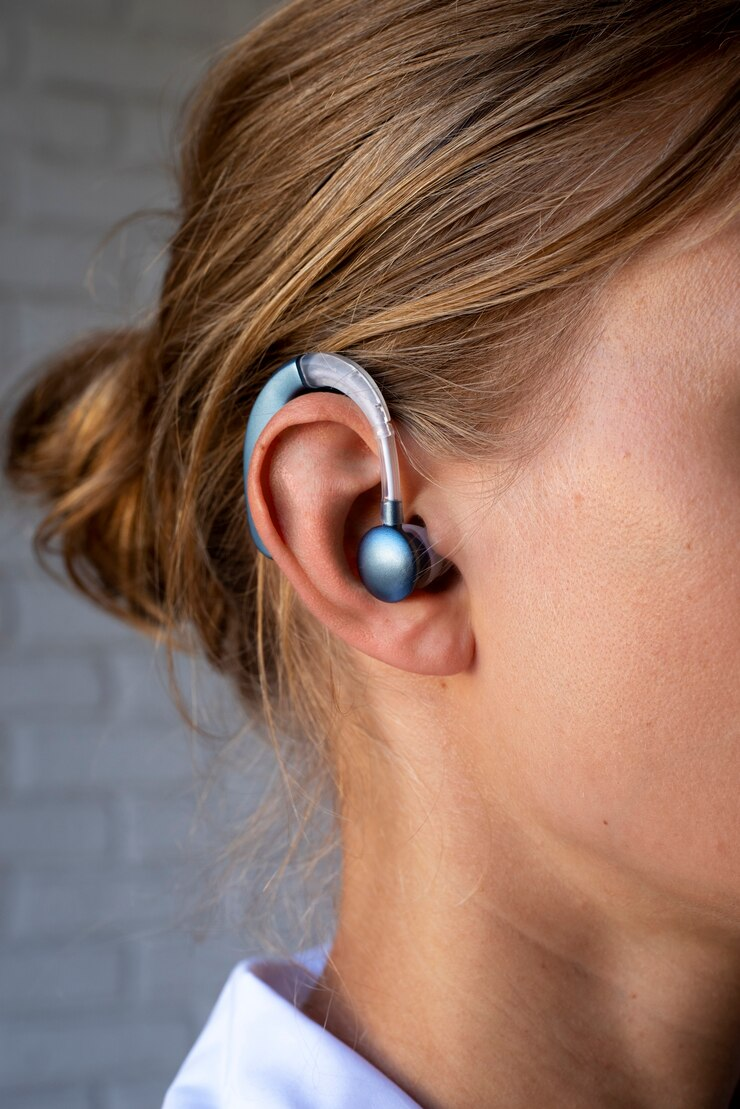When it comes to hearing loss, finding the right hearing aid can make a world of difference. Whether you’re struggling to follow conversations, enjoy your favorite music, or simply hear the sounds of the world around you, choosing the best hearing aid tailored to your specific needs can dramatically improve your quality of life. But with so many options available, how do you know which one is right for you?
In this article, we’ll walk you through the essential factors to consider when choosing the best hearing aid for your hearing needs, lifestyle, and budget. From understanding your hearing loss to considering the latest technology and features, we’ll cover everything you need to make an informed decision.
1. Understanding Your Hearing Loss
The first step in choosing the right hearing aid is to understand the type and degree of your hearing loss. There are three main types of hearing loss:
- Sensorineural Hearing Loss: This is the most common type and occurs when there’s damage to the inner ear or auditory nerve. It often requires a hearing aid to amplify sound and improve hearing.
- Conductive Hearing Loss: This type occurs when there’s a problem in the outer or middle ear, such as ear infections or fluid in the ear. Bone conduction hearing aids may be a good option in this case.
- Mixed Hearing Loss: This is a combination of sensorineural and conductive hearing loss, meaning both the inner ear and the outer or middle ear are affected.
A professional hearing test performed by an audiologist is the best way to determine the extent and type of your hearing loss. Once you have this information, you can better understand which type of hearing aid will be most effective for your needs.
2. Consider Your Lifestyle and Listening Needs
The next step is to consider your lifestyle and how you plan to use your hearing aid. Your hearing needs can vary depending on your daily activities, the environments you spend time in, and your personal preferences. Here are a few questions to ask yourself:
- Do you spend a lot of time in noisy environments? If you frequently find yourself in loud settings like restaurants, offices, or busy streets, you might benefit from hearing aids with advanced noise reduction and directional microphones.
- Do you prefer discreet devices? If you’re looking for something small and discreet, hearing aids that fit inside the ear, such as CIC (Completely in the Canal) or IIC (Invisible in the Canal) models, might be ideal.
- Do you want added features like Bluetooth connectivity? If you enjoy streaming music, taking calls, or using your hearing aid with other devices like your TV, look for hearing aids with Bluetooth capabilities.
- How active are you? If you have an active lifestyle and need a hearing aid that’s comfortable for sports or outdoor activities, you may want a model that doesn’t block the ear canal or one that’s more rugged and sweat-resistant.
The best hearing aid for you will complement your lifestyle and provide the necessary support for various listening environments.
3. Choosing the Right Style
Hearing aids come in various styles, each with its own benefits and considerations. Here’s a quick overview of the most common styles:
- Behind-the-Ear (BTE): These hearing aids sit behind the ear and are connected to a custom ear mold or a small earbud that fits inside the ear canal. BTEs are suitable for most types of hearing loss, including severe loss, and come with a range of advanced features.
- In-the-Ear (ITE): These hearing aids fit directly inside the outer ear, making them more discreet than BTEs. They’re generally more comfortable than BTEs and can accommodate more features, but they may not be suitable for severe hearing loss.
- Completely-in-the-Canal (CIC): These small devices sit deep in the ear canal and are almost invisible. They are ideal for people with mild to moderate hearing loss who prefer a discreet solution.
- Receiver-in-the-Canal (RIC): RIC hearing aids are similar to BTEs but have the receiver (the part that delivers sound) placed in the ear canal, offering a more natural sound experience and a smaller, sleeker design.
Each style comes with its own set of pros and cons, depending on your hearing needs, comfort preferences, and aesthetic considerations.
4. Technology and Features
Modern hearing aids come equipped with a variety of advanced technologies that can significantly enhance your hearing experience. Some key features to consider include:
- Noise Reduction: This feature helps reduce background noise, making it easier to focus on conversations even in noisy settings.
- Directional Microphones: Directional microphones focus on sounds coming from a specific direction (e.g., the person in front of you), making it easier to hear speech in crowded or noisy environments.
- Bluetooth Connectivity: Bluetooth-enabled hearing aids allow you to connect directly to your smartphone, TV, or other audio devices for a more convenient and seamless hearing experience.
- Rechargeable Batteries: Many modern hearing aids come with rechargeable batteries, eliminating the need for regular battery changes and offering greater convenience.
- Feedback Cancellation: This feature helps reduce the annoying whistling or feedback sounds that can occur with hearing aids.
- Automatic Volume Adjustment: Some hearing aids can automatically adjust the volume based on your environment, making them more user-friendly and convenient.
The more advanced the technology, the higher the price, but these features can improve the overall hearing experience, especially in challenging environments.
5. Budget Considerations
Hearing aids come in a wide range of prices, depending on the style, features, and technology. While higher-end models offer advanced features and better performance, they also tend to be more expensive. It’s important to find a balance between your budget and the features you need.
In India, hearing aids in Jaipur and other cities are available at various price points, and many hearing centers offer financing options or discounts on hearing aids. Additionally, some health insurance plans may cover part of the cost, so be sure to check with your provider.
6. Getting Fitted and Adjusted
Once you’ve chosen a hearing aid, it’s crucial to get it properly fitted and adjusted by an audiologist. They will ensure that your hearing aid is comfortable, that it fits well, and that it’s calibrated to your specific hearing loss. The audiologist will also guide you on how to use and care for your hearing aid to ensure it provides optimal performance.
7. Aftercare and Support
A good hearing aid provider should offer ongoing support, including regular check-ups, adjustments, and repairs. Make sure you choose a provider that offers excellent customer service and aftercare support.
Final Thoughts
Choosing the best hearing aid for your needs requires thoughtful consideration of your hearing loss, lifestyle, budget, and personal preferences. By consulting with a professional audiologist, you can find a hearing aid that enhances your hearing, fits your lifestyle, and improves your overall quality of life. Whether you’re in Jaipur or elsewhere, local hearing centers can help guide you through the process and provide the support you need.
Remember, your hearing is an important part of your daily life, and with the right hearing aid, you can enjoy better communication, increased confidence, and a more vibrant connection to the world around you.



